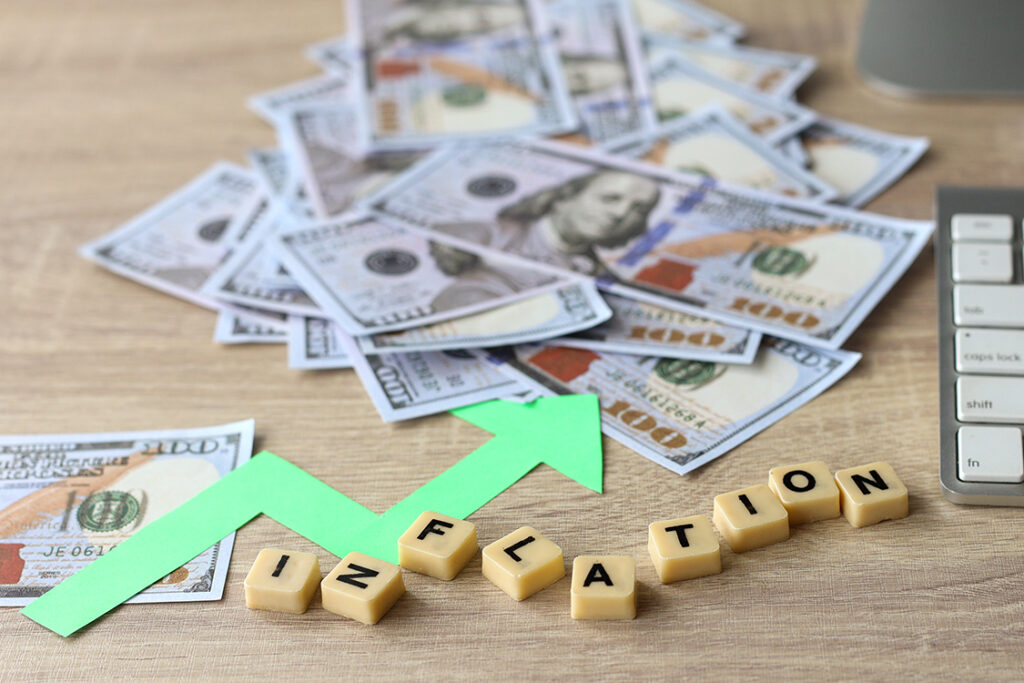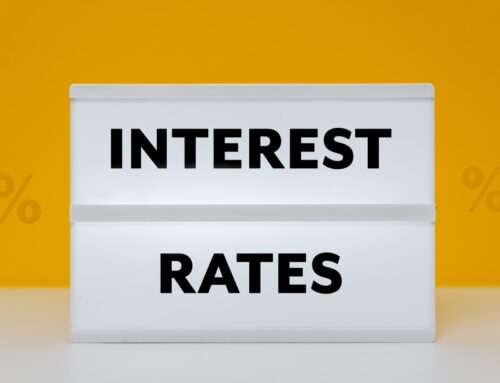 Inflation is an economic reality that affects nearly every aspect of financial planning, including retirement savings. Inflation’s long-term impact on savings can be significant, particularly for individuals who rely on fixed incomes after they retire. Understanding how inflation erodes purchasing power and what strategies may help mitigate its effects is an essential consideration for long-term financial planning.
Inflation is an economic reality that affects nearly every aspect of financial planning, including retirement savings. Inflation’s long-term impact on savings can be significant, particularly for individuals who rely on fixed incomes after they retire. Understanding how inflation erodes purchasing power and what strategies may help mitigate its effects is an essential consideration for long-term financial planning.
The Nature of Inflation and Its Effects on Savings
Inflation refers to the general increase in prices of goods and services over time. As prices rise, the purchasing power of money decreases, meaning that a dollar today buys less than it did in previous years. This can present a challenge as you approach retirement, as your savings and income sources need to keep pace with inflation to maintain your standard of living.
For example, if the annual inflation rate averages 3%, the cost of living will roughly double in about 24 years. This means that an individual who retires with $500,000 in savings today may find that the real value of those funds has been effectively halved by the later years of retirement, assuming no additional growth. This reduction in purchasing power can be particularly concerning for those relying on fixed-income investments or pensions that do not adjust for inflation.
Inflation’s Influence on Investment Returns
Many retirement savings vehicles, such as 401(k) plans and IRAs, are invested in stocks, bonds, and other assets designed to grow over time. While historically, equities have tended to outpace inflation over the long run, not all investments offer the same level of resilience.
Bonds, particularly those with fixed interest rates, can be negatively affected by inflation. When inflation rises, the real return on bonds declines, since the purchasing power of future interest payments decreases. On the other hand, some
assets, such as Treasury Inflation-Protected Securities (TIPS)[1], are designed to adjust with inflation, helping to preserve purchasing power.
Diversifying investments to include assets that have historically performed well during inflationary periods, such as equities and real estate, may potentially help manage some of the risks associated with inflation. However, market fluctuations and individual risk tolerance should be taken into account when structuring a portfolio.
Social Security and Inflation Adjustments
One income source that adjusts for inflation is Social Security. The program includes cost-of-living adjustments (COLAs)[2], which are meant to help recipients keep up with rising prices. However, the formula used to calculate these adjustments may not always fully capture the inflation experienced by retirees, particularly in healthcare costs, which often rise faster than the general inflation rate.
Additionally, relying solely on Social Security for retirement income may not be sufficient for covering all expenses. It is important to consider additional sources of income that have the potential to grow and offset inflationary pressures over time.
Rising Healthcare Costs and Inflation
Healthcare expenses tend to increase at a higher rate than general inflation. Prescription medications, long-term care, and medical services often become more expensive over time, which can place additional strain on retirement savings.
Individuals planning for retirement may want to take into account potential healthcare costs and consider options such as health savings accounts (HSAs) or long-term care insurance to help address these retirement inflation concerns.
Medicare does provide some relief, but it does not cover all medical expenses, including long-term care in many cases. Understanding what healthcare costs might look like in the future and incorporating them into a broader retirement strategy can help you better prepare for potential financial challenges.
Strategies to Address Inflation in Retirement Planning
While inflation cannot be controlled, there are steps that individuals can take to help reduce its impact on their retirement savings. Some potential strategies to address retirement inflation concerns include:
- Investing in Growth-Oriented Assets: Including a mix of equities and other investments that have historically outpaced inflation may help maintain purchasing power over time. Stocks, while carrying higher volatility, have historically shown the potential for stronger long-term returns compared to fixed-income investments.
- Adjusting Withdrawal Rates: Retirees drawing from their savings may need to periodically reassess their withdrawal rates to help account for inflationary pressures. A commonly referenced approach is the 4% rule, but adjustments may be necessary depending on market conditions and personal financial circumstances.
- Considering Inflation-Protected Securities: TIPS and other assets that adjust with inflation may potentially offer some level of protection against rising prices. These investments may offer potential for more stable returns, which could help mitigate the effects of inflation.
- Maintaining Flexibility in Budgeting: Given that inflation can be unpredictable, having a flexible approach to spending and budgeting may help individuals adapt to changes in costs over time.
- Delaying Social Security Benefits: Waiting to claim Social Security benefits beyond the full retirement age can result in larger monthly payments, which can provide additional financial stability later in retirement.
Addressing Retirement Inflation Concerns
Inflation is a critical factor in retirement planning, affecting everything from the real value of savings to healthcare costs and investment returns. While its effects cannot be eliminated, thoughtful planning and strategic financial decisions can help mitigate some of the risks associated with rising prices. Staying informed about inflation trends and adjusting financial strategies accordingly can contribute to a more stable and sustainable retirement plan over time.
Sources:






















 Megan Jones joined the ILG Financial team in 2020 as marketing director. Megan and her husband live in Fredericksburg, VA with their German Short Haired Pointer, Gus. Megan is a graduate of Longwood University and holds a degree in communications. Megan is the oldest of Dave Lopez’s three children and not only enjoys working alongside her father, but also with her cousin, Chase, who joined the ILG Financial team in 2020 as an advisor. Megan is also a fully licensed Life, Health, and Annuity agent. When not at work, Megan enjoys sitting on the back porch with family and friends enjoying food and music.
Megan Jones joined the ILG Financial team in 2020 as marketing director. Megan and her husband live in Fredericksburg, VA with their German Short Haired Pointer, Gus. Megan is a graduate of Longwood University and holds a degree in communications. Megan is the oldest of Dave Lopez’s three children and not only enjoys working alongside her father, but also with her cousin, Chase, who joined the ILG Financial team in 2020 as an advisor. Megan is also a fully licensed Life, Health, and Annuity agent. When not at work, Megan enjoys sitting on the back porch with family and friends enjoying food and music. Chase Lopez joined the ILG Financial team in 2020 as an advisor. Chase is a 2016 James Madison University graduate with a degree in management. Chase has been trained under the tutelage of Dave Lopez, who is not only the founder and managing member of ILG Financial, but also is Chase’s uncle and godfather. He also enjoys working alongside his cousin, Megan, who is Dave’s daughter.
Chase Lopez joined the ILG Financial team in 2020 as an advisor. Chase is a 2016 James Madison University graduate with a degree in management. Chase has been trained under the tutelage of Dave Lopez, who is not only the founder and managing member of ILG Financial, but also is Chase’s uncle and godfather. He also enjoys working alongside his cousin, Megan, who is Dave’s daughter. Amy Anderson joined the ILG Financial team in 2023 as the client relations coordinator. Her responsibilities include scheduling of appointments, annual check-up notifications, and annuity and required minimum distribution assistance. She is a graduate of Harding University with a degree in Computer Information Systems. Amy and her husband have two children and she enjoys reading, crocheting, music and spending time with her family.
Amy Anderson joined the ILG Financial team in 2023 as the client relations coordinator. Her responsibilities include scheduling of appointments, annual check-up notifications, and annuity and required minimum distribution assistance. She is a graduate of Harding University with a degree in Computer Information Systems. Amy and her husband have two children and she enjoys reading, crocheting, music and spending time with her family. Jessica Carson joined the ILG Financial team in 2018 as an agent. Jessica and her husband have four children, two dogs, 3 barn cats, 5 chickens, and three parakeets. She indeed loves her children and pets! When not at work, Jessica enjoys playing the piano and cello as well as traveling and spending time outside with her family, hiking, fishing, and boating.
Jessica Carson joined the ILG Financial team in 2018 as an agent. Jessica and her husband have four children, two dogs, 3 barn cats, 5 chickens, and three parakeets. She indeed loves her children and pets! When not at work, Jessica enjoys playing the piano and cello as well as traveling and spending time outside with her family, hiking, fishing, and boating. Terri Center joined the ILG Financial team in 2019 as client services manager. She handles client records, application processing, and gathering information to provide a professional and friendly experience with all of our clients. Terri is a graduate of Oakland University. She is married and has two children. She enjoys hiking, family time, and puzzle challenging video games. She also likes to share her creativity in her canvas paintings and sewing projects.
Terri Center joined the ILG Financial team in 2019 as client services manager. She handles client records, application processing, and gathering information to provide a professional and friendly experience with all of our clients. Terri is a graduate of Oakland University. She is married and has two children. She enjoys hiking, family time, and puzzle challenging video games. She also likes to share her creativity in her canvas paintings and sewing projects.